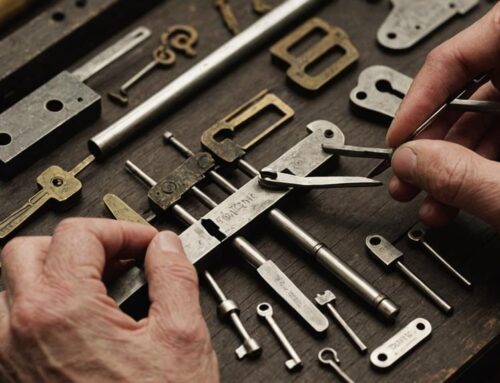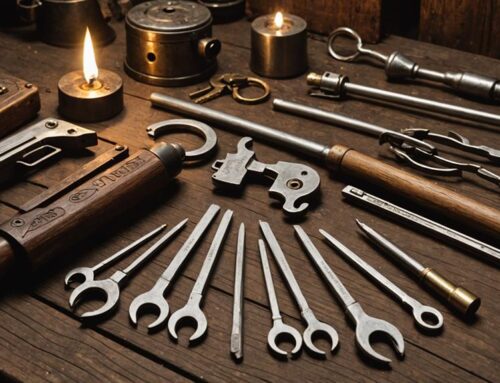Reveal the secrets of advanced lock picking with finesse and precision, elevating your locksmithing skills to expert levels. Master the intricate mechanisms of pin and tumbler locks, hone your single pin picking techniques, and investigate the swift raking methods for low-security locks. Impress with precision as you decode complex locks and bypass traditional methods. Discover the art of impressioning for key precision and explore troubleshooting techniques for mastering every challenge. Investigate advanced insights into bypass methods and elevate your skills through practical drills. Take the first step towards expertise in lock picking – uncover the hidden techniques that will refine your craft.
Key Takeaways
- Master single pin picking for precision and sensitivity in manipulating individual pins.
- Practice raking techniques for quick entry into low-security locks using multiple pin manipulation.
- Utilize impressioning to create precise keys by understanding lock mechanics through key impressions.
- Troubleshoot impressioning issues by adjusting pressure, maintaining alignment, and using proper filing techniques.
- Explore bypass methods like shimming, levering, decoding, and key bumping for alternative lock opening strategies.
Understanding Pin and Tumbler Locks
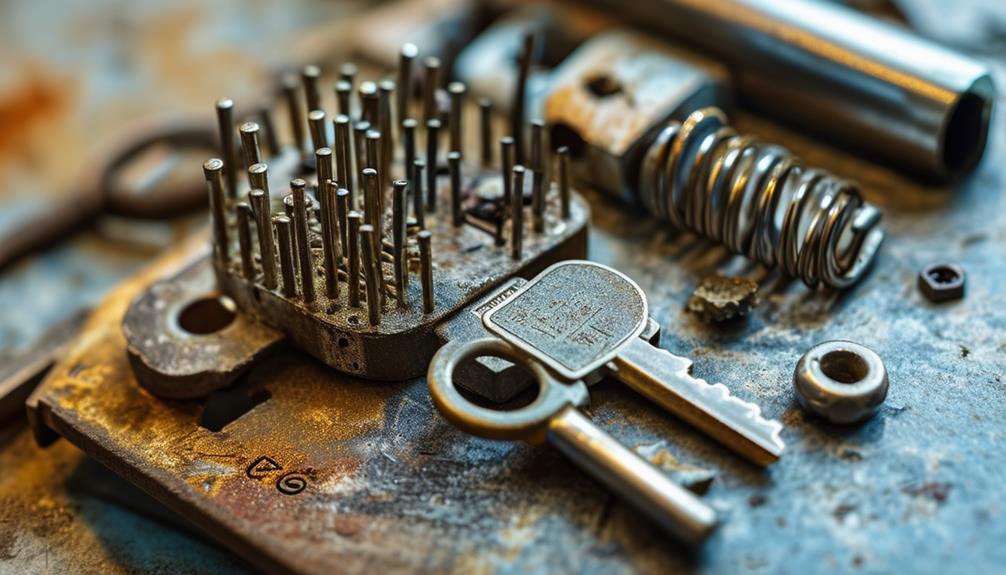
To master advanced lock picking techniques, it's essential to first understand the inner workings of pin and tumbler locks. These common locks consist of a series of pins of varying lengths that must be lifted to specific heights by a key to align the shear line and open the lock.
Understanding the mastering techniques necessary for effective lock picking can greatly enhance your skills. When mastering advanced lock picking, it's vital to grasp this mechanism. By inserting a tension wrench to apply slight pressure to the lock's cylinder and using a pick to manipulate each pin individually, you can simulate the action of a key, allowing you to open the lock without one.
Understanding how the pins interact within the lock is fundamental to honing your skills in mastering advanced lock picking. As you practice, pay attention to the feedback from the pins as you lift them, adjusting the pressure from the tension wrench accordingly.
Mastering Single Pin Picking
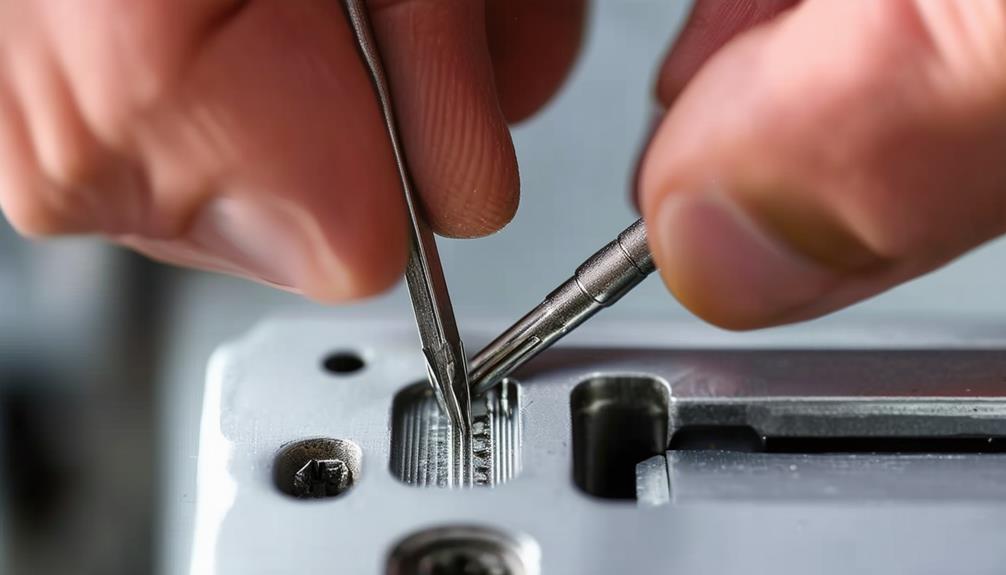
When mastering single pin picking, the focus shifts to precisely manipulating each pin within the lock to open it. This technique requires patience and a delicate touch, as understanding the unique vulnerabilities of different locks is vital for effective picking.
Begin by inserting your tension wrench into the keyway and applying slight pressure in the direction that the key would turn. Use your pick to gently lift each pin to the shear line one at a time. As you lift the pins, pay attention to the feedback you receive from the lock; you may feel a slight click or movement when a pin sets into place, which is a form of tactile feedback essential for skill differentiation.
Keep adjusting the pressure on the tension wrench as needed to maintain the slight tension required to keep the pins in place. With practice, you'll develop a feel for the pins and be able to open the lock smoothly.
Exploring Raking Techniques
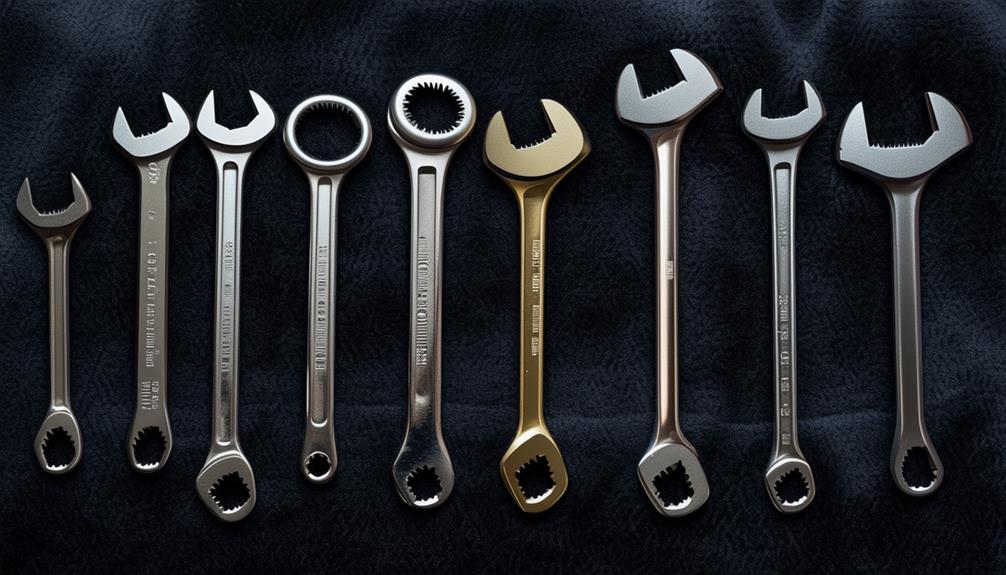
Let's talk about raking techniques, a method in lock picking that focuses on speed and efficiency.
This technique manipulates multiple pins simultaneously, making it particularly effective on low-security locks with calm bitting.
By using speedy raking methods, you can manipulate the pins in a lock effectively.
This technique allows for quick entry into a lock by rapidly moving the rake tool up and down to set the pins in place, demonstrating the simplicity and speed associated with raking methods the effectiveness of raking.
Speedy Raking Methods
How can you quickly and effectively open a lock using raking techniques? Speedy raking methods involve using a rake tool to quickly move the lock's pins into place.
To begin, insert the rake tool into the lock and apply slight pressure to the tension wrench. Next, rapidly move the rake tool up and down inside the keyway while maintaining tension on the wrench. This rapid movement causes the rake to bump the pins, setting them in the process. Keep a steady rhythm and varying pressure on the rake to increase the chances of successfully raking the lock open.
Speedy raking methods are effective for simple and low-security locks, allowing you to bypass them swiftly. However, they may not work on more complex locks that require individual pin manipulation.
Practice is key to mastering this technique, as developing a feel for the pins and understanding the feedback from the lock are vital for success. Remember, while speedy raking can be a quick solution, it's important to refine your skills and explore other techniques for challenging locks.
Effective Pin Manipulation
To effectively manipulate pins using raking techniques, it's essential to understand the key role that precision and control play in this method.
When employing raking for effective pin manipulation, focus on applying just the right amount of pressure and tension on the lock. With a rake tool, gently insert it into the keyway and move it in and out, while simultaneously applying slight pressure on the tension wrench.
The goal is to mimic the action of a key moving through the pins. By raking, you're aiming to set multiple pins at once, which can lead to quicker results compared to single-pin picking.
Remember, the key to successful raking lies in finding the right balance between speed and accuracy. Practice different rake techniques to develop a feel for the lock's feedback and adjust your technique accordingly.
With patience and persistence, mastering effective pin manipulation through raking can markedly enhance your lock picking skills.
Using Impressioning for Precision
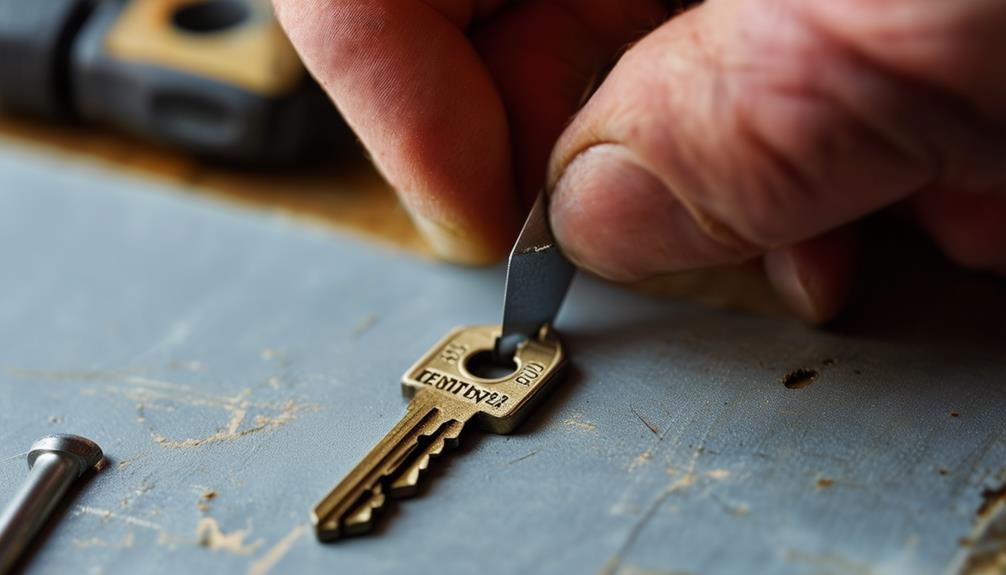
To achieve precise results in lock picking, impressioning can be a valuable technique for you to explore. This method allows you to gain a deeper understanding of the lock's mechanics, making it essential for any aspiring expert.
Utilizing specialized tools and materials, you can carefully create impressions of the lock's internal components to determine the precise key cuts required for successful entry. For those interested in honing their skills, it's important to reflect on the essential tools that lock picking experts rely on.
Impressioning Tools and Materials
When utilizing impressioning for precision in lock picking, having the right tools and materials is essential. Advanced lockpicking tools such as impressioning files, key blanks, and a vice grip are vital for successful impressioning.
The impressioning file is the primary tool used to cut the key, and having different sizes and shapes can help in creating accurate impressions. Key blanks serve as the base for creating the new key, ensuring a precise fit in the lock. A vice grip is essential for securing the key blank during the impressioning process, preventing any movement that could affect the accuracy of the impression.
In addition to tools, materials like graphite powder or ink can be used to enhance the impressioning process by highlighting the marks made on the key blank. These materials make it easier to identify the areas that need further filing to create a working key.
With the right tools and materials at your disposal, you can master the art of impressioning and open even the most challenging locks with precision.
Technique Step-by-Step
As you commence on mastering the technique of using impressioning for precision in lock picking, it's essential to understand the step-by-step process involved in creating a working key through impressions.
To begin, insert a blank key into the lock and apply pressure while turning it slightly to create marks on the key's surface. Next, remove the key and carefully file down the marked areas to smoothen them out.
Repeat this process multiple times, making slight adjustments each time until the key can successfully open the lock. This method requires patience and attention to detail, as even the smallest imperfections can affect the key's functionality.
Remember to use the correct tools and techniques to guarantee precision in your impressions. By practicing this advanced lock picking technique diligently, you can refine your skills and become proficient in impressioning for precision.
Troubleshooting Common Issues
Precision in lock picking through impressioning can sometimes present challenges that require troubleshooting. When encountering issues during your expert lock picking endeavors, consider the following table for guidance:
| Issue | Possible Cause | Solution |
|---|---|---|
| Key impression is faint | Incorrect pressure applied | Adjust the pressure exerted while impressioning |
| Key impression is off-center | Misalignment of tools | Realign the tools and confirm they are in the correct position |
| Key impression is inconsistent | Irregular movements | Maintain steady and consistent pressure and movements |
| Key impression is not forming correctly | Incorrect blank key used | Verify the key blank matches the lock before proceeding |
Delving Into Bypass Methods
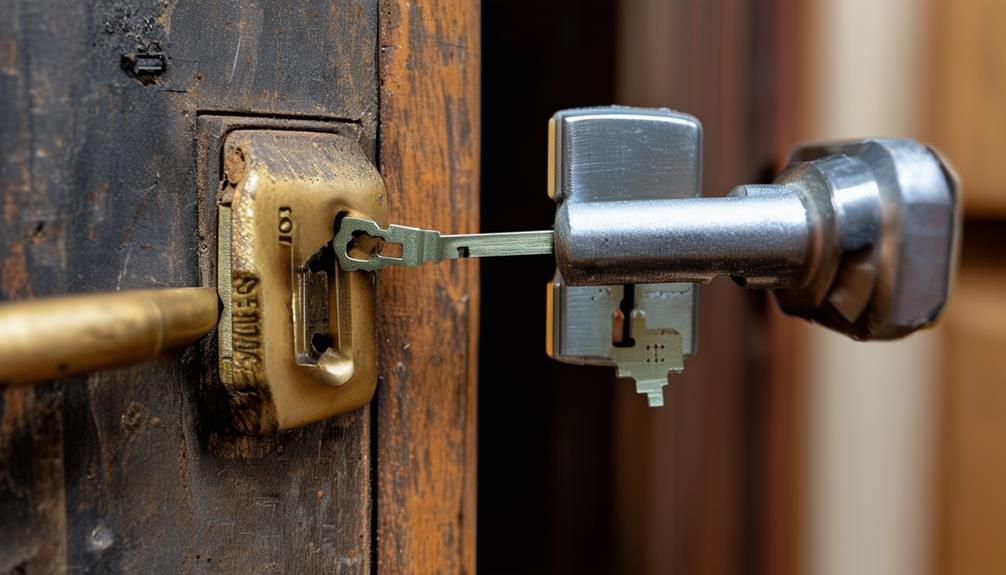
To navigate through complex lock systems with finesse, understanding and employing bypass methods becomes essential. These techniques not only enhance your skills but also broaden your toolkit for various situations.
When faced with intricate mechanisms, relying solely on traditional picking techniques may prove challenging. Advanced lockpicking methods often involve bypassing certain components altogether to expedite the release process.
Here are some key bypass methods that can aid you in your endeavors:
- Impressioning: By creating a key that fits the lock through manipulation, you can bypass the need for picking.
- Shimming: Using thin pieces of material to manipulate the internal components of the lock can bypass the need for traditional tools.
- Levering: Applying pressure to certain points in the lock can bypass the need for intricate picking techniques.
- Decoding: Understanding the internal workings of a lock can help you decode the appropriate sequence, effectively bypassing the need for extensive picking. For those interested in the fundamentals, a beginner's step-by-step guide can provide valuable insights.
- Key Bumping: Utilizing a specially crafted key to manipulate the pins in a lock can bypass the need for traditional picking methods.
Practicing Decoding for Complex Locks
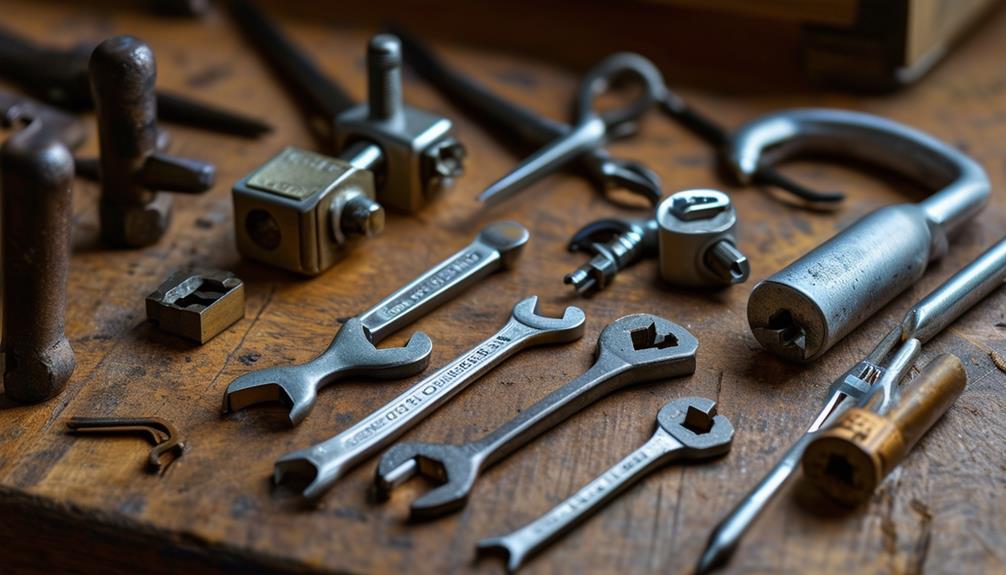
Mastering the art of decoding complex locks requires a keen understanding of their intricate mechanisms and the right tools at your disposal. When practicing decoding, it's vital to start by familiarizing yourself with the different types of locks and their corresponding decoding methods, including insights on essential tools for lock picking.
Begin by studying the anatomy of the lock, paying close attention to the pins, springs, and any security features present. Practice decoding by using various tools such as lock picks, tension wrenches, and decoding devices to manipulate the lock's components effectively.
As you explore the world of practicing decoding, remember to approach each lock with patience and precision. Take the time to understand how each pin reacts to your decoding techniques and how the lock responds to your movements.
Enhancing Skills With Practice Drills
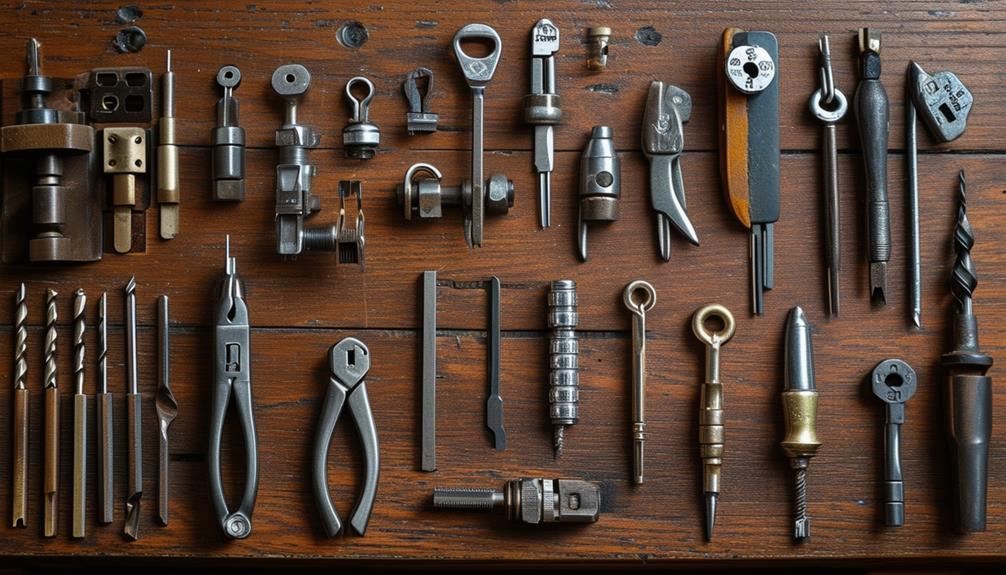
To elevate your lock picking proficiency, engaging in structured practice drills is essential. Consistent practice not only hones your skills but also helps you develop muscle memory and speed, vital for success in lockpicking for experts.
Incorporating advanced techniques can further enhance your repertoire, allowing you to tackle a wider variety of locks with confidence. Here are some effective practice drills to enhance your expertise:
- Blindfolded Practice: By relying solely on touch and feel, you can improve your tactile sensitivity and reliance on feedback from the lock.
- Speed Lockpicking: Set a timer and challenge yourself to pick a lock within a specific time frame, gradually reducing the time as you improve.
- Progressive Pinning: Start with a few pins and gradually increase the complexity by adding more pins or security features to mimic real-world scenarios.
- One-handed Picking: Enhance your dexterity and adaptability by practicing lock picking using only one hand, simulating situations where your other hand may be occupied.
- Mastering Tension Control: Practice applying the right amount of tension to the lock, a vital skill for precision and control during lockpicking. This is especially important as you learn to navigate different lock mechanisms and their unique challenges in mastering advanced methods.
Frequently Asked Questions
Can Lock Picking Damage the Lock Mechanism?
Yes, lock picking can damage the lock mechanism if done incorrectly.
Applying excessive force or using the wrong tools may lead to broken pins or misalignment, rendering the lock inoperable.
It's essential to practice proper technique, be patient, and understand the mechanics of the lock you're working on to minimize the risk of damage.
Always proceed carefully and consider seeking professional help if unsure about your abilities.
Are There Legal Restrictions on Practicing Lock Picking?
Yes, there are legal restrictions on practicing lock picking in many places.
Laws vary by location, but in general, possessing lock picking tools can be considered illegal if you intend to use them for unlawful purposes.
It's important to research and understand the regulations in your area before engaging in lock picking activities to avoid any legal issues.
Remember to always practice this skill responsibly and ethically.
How Can I Increase My Lock Picking Speed?
To enhance your lock picking speed, focus on fine-tuning your technique by practicing regularly.
Try timing yourself to track progress and identify areas for improvement.
Utilize quality tools and maintain them properly to guarantee smooth operation.
Additionally, explore different methods and experiment with various tension levels to find what works best for you.
What Tools Are Essential for Advanced Lock Picking?
To become an advanced lock picker, you'll need essential tools like tension wrenches, lock picks, and a good quality practice lock.
These tools are vital for honing your skills and mastering different types of locks. As you progress in your lock picking journey, these tools will become invaluable for tackling more complex locks and increasing your proficiency.
Make sure to invest in high-quality tools to enhance your performance and efficiency.
Can Lock Picking Be Used for Non-Destructive Entry?
Lock picking can indeed be used for non-destructive entry. Notably, according to a study by the Associated Locksmiths of America, lock picking accounts for a small percentage of overall break-ins.
With the right skills and tools, you can access locked spaces without causing damage. It's a valuable skill when used ethically, such as in emergency situations where entry is necessary but damaging the lock isn't ideal.
Conclusion
Now that you've mastered these advanced lock picking techniques, remember to always use your newfound skills responsibly and ethically. After all, the last thing you want is to find yourself on the wrong side of a locked door, wishing you had left that lock unpicked. Happy picking, and remember, with great power comes great responsibility!



